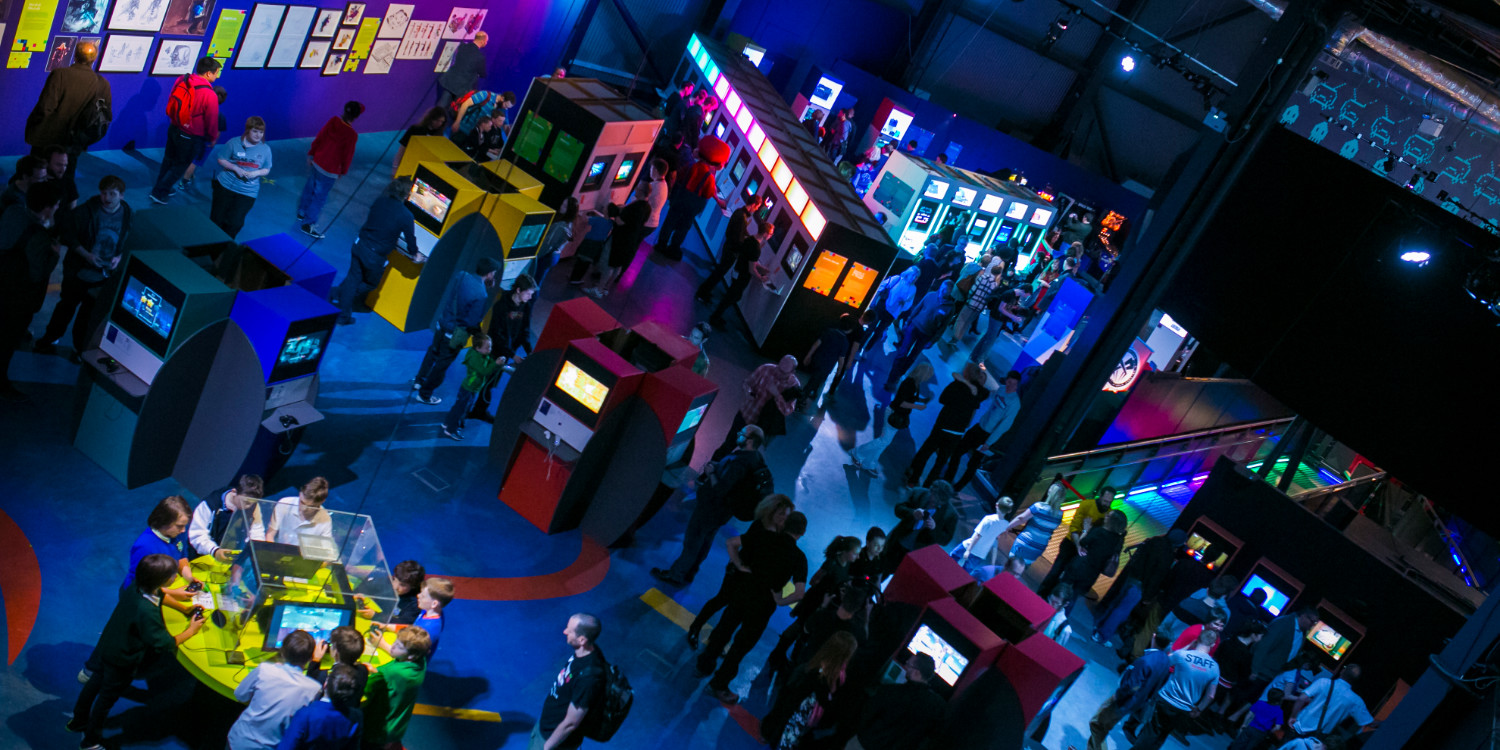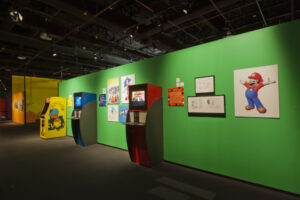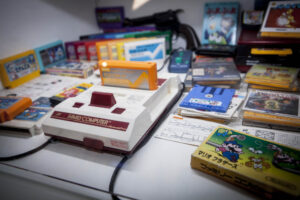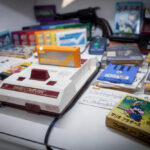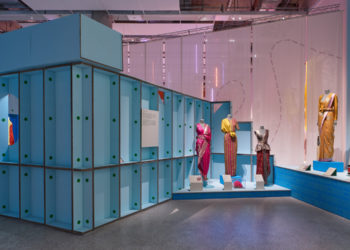Created by the Barbican with Curator Conrad Bodman and Rockstar Games’ Lucian King, Game On is the art centre’s most successful touring exhibition, travelling to four continents and being seen by over 5 million visitors in the last 20 years. At this incredible milestone of longevity and popularity, Barbican Immersive looks to share the history of the show and offer some insights into how the exhibition has evolved and maintained relevancy.
Launched at the Barbican Centre in May 2002, Game On had a simple but bold curatorial agenda: to present visitors to the Barbican Art Gallery with a playable history of videogames. The exhibition includes around 100 playable games stretching from the first computer science experiments in virtual gaming to iconic franchises like Pong, Space Invaders, Mario and contemporary trends in gaming technology and culture. While today gaming continues to rise in popularity and has established a presence in museums and galleries, in 2002 a presentation of this scale was new and radical.
Although the exhibition was received enthusiastically, for some it was still seen as controversial. Were games an artform? Were they deserving of serious critical discourse? In Game On the answer to both is yes. The exhibition explores games from different perspectives and looks across the globe and historical moments. The exhibition starts by immersing visitors in the early years of the medium, giving visitors the opportunity to play the very first games such as Computer Space and Spacewar! on vintage hardware before moving on to discover the development stories of iconic games including Grand Theft Auto 3 and Tomb Raider. The exhibition continues to explore a vast range of videogame experiences to show how they can create meaningful experiences for everyone: from games featuring only sound or text, to games that invite adventure, collaboration or competition, to simulations centred around dating, driving, or even games where players dance or form a band. Wherever it is exhibited, Game On is always a haven for gamers and an exciting space for newcomers to enjoy this hugely valuable and influential creative industry.
Originally an extended tour was not part of the project planning for Game On, however, as soon as the exhibition opened at Barbican, there was significant international interest in the project. The Barbican worked closely with videogame publishers, developers and cultural organisations worldwide, to enable Game On to exhibit at over 40 venues across Europe, Asia Pacific, North and South America. Building on the success of the tour, the Barbican created Game On 2.0. This second exhibition that launched in Tasmania in 2010 explored the same curatorial themes but offered audiences a larger selection of games and more behind-the-scenes material. The two exhibitions toured simultaneously so the Game On experience could be offered to venues of different scales and capacities. The Game On 2.0 tour ended in 2020 and elements of both shows have been combined to tour as Game On from 2023.
The continued success of Game On is due to many factors, most notably the commitment and generosity of videogame developers, exhibition venues, collectors, and the wider gaming community who have all enthusiastically supported the exhibition. With this generous support, Game On has showcased some unique elements of gaming history, including design documents for Space Invaders, Donkey Kong, The Sims and World of Warcaft. The exhibition has also been an opportunity for people to experience innovations at the cutting edge of videogame creativity, such as showcasing PlayStation VR before its launch and highlighting unique local stories of the videogame industry in each country or region the exhibition has visited. The Barbican re-curates the exhibition with every venue and ensures local games and designers are included so visitors see videogaming as part of their culture and community.
The rich range of content and stories in the exhibition, with multiple layers of interpretation, has ensured Game On’s adaptability to different audiences and the hosting venue’s curatorial priorities – from Art Centres interested in the cultural aspects of gaming, to Museums focusing on the historical narrative, as well as Science Centres that engage in new technology and STEM (science, technology, engineering, and mathematics) themes.
Another core source of success has been the versatility of the exhibition and the ability to continuously adapt the content and narrative over the years. Game On has changed dramatically over the now 20-year tour, as have videogames. The exhibition today celebrates the diversity of creators in the industry breaking the stereotypes about gamers and game creators. There are artefacts that highlight the lesser-known contributions of pioneers such as the first female game designer, Carol Shaw. The games on show celebrate the truly global nature of the industry, with a World Games section featuring games from India, the Americas, Europe and Asia.
The continued relevance and adaptability of the exhibition was recognised by readers of Dezeen when they voted Game On winner of exhibition design of the year in 2020 for its presentation at Fundación Canal in Madrid.
After an incredibly successful run at the Forum Groningen in 2022, the Barbican Immersive team continues to update the content and are looking forward to welcoming new visitors and collaborating with new venues and game creators worldwide to celebrate videogames and their incredible technology and endless creativity.
Reflecting on the longevity of the exhibition, Conrad Bodman shared the following thoughts on the exhibition and its place in contemporary culture:
“I am delighted the Game On has reached its 20 year milestone. It is an incredible achievement but in some ways not a surprising one. We knew when we were developing the exhibition that games were making an important contribution to the cultural and creative lives of millions of people around the world and that game designers needed to be recognised for their work. Game On positioned game design as an artform worthy of discussion in museums and galleries and has inspired institutions and communities around the world to take a deeper look at the subject. It has been a huge influence and long make it continue to tour!”
Videogames in the exhibition
Here is a selection of videogames visitors have the unique opportunity to play when visiting the Game On exhibition:
Space Invaders, SPACEWAR!, Pong, Donkey Kong, Asteroids, Super Mario, Street Fighter, Tomb Raider, Just Dance, Horizon Zero Dawn, Doom, Tetris, FIFA Soccer, Halo, Grand Turismo, Rez, Tron, and other 100 playable videogames and arcades.
Exhibition mentioned
Game On, by Barbican Immersive

